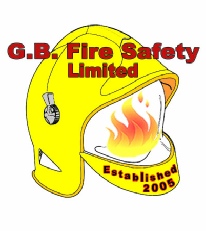
Company Registered Address: 80 Friar Gate Derby DE1 1FL Company Registered in England and Wales No: 09582633
 Contact Us
Gallery
Price Structure
News
Home
Contact Us
Gallery
Price Structure
News
Home
Evacuation Drill - Lesson Plan and Learning Outcomes
|
SUBJECT |
TRAINER |
LOCATION |
TIME |
|
EVACUATION EXERCISE |
G. BROADHURST |
CARE HOME |
1.5 HOURS |
OVERVIEW
Evacuation drills are an essential part of testing both the procedures in place, the level of staff training and knowledge.
The staff must understand that they have a duty of care to the residents and must do what ever they can to protect them at all times.
The exercise is divided into several areas as follows;
The staff are briefed to explain why the drill is taking place, who will carry out the drill and who will act as residents.
The staff are briefed to explain how it will start, what the purpose is and when it will stop.
After the drill has been stopped, the trainer will go back to the zone and talk through what happened, and if it could be improved in any way.
A short report will be provided to the manager as well as the course content.
The staff will then have Q&A in the classroom.
|
SUBJECT |
CONTENT EXPLAINED |
LEARNING OUTCOME |
|
Explain why drills have to be carried out |
Staff will be told that drills are carried out to test procedures and to ensure staff are suitably trained. |
Staff will understand why drills are carried out and what they achieve including giving the staff more confidence to deal with an emergency. |
|
Detail staff who are acting as residents |
Staff will be told where they will be located in the bedrooms, and what ailments they have to replicate as the residents. |
Staff will know that they must not assist rescuers as it will give false impressions and wrong timings. |
|
Detail the staff who are carrying out the drill |
Explain that the drill is pre-arranged and will be started by actuating the fire alarm. The fire warden will take charge, check the fire panel and detail the other staff what to do. |
The staff will understand what is required when the alarm sounds but will not know where the incident is located. |
|
Safety officers and observers will be chosen and briefed |
To ensure all staff members take something away from the drill, even if they don’t take part, several team members will act as observers and take notes to discuss at the de-brief. |
Everyone needs to understand what can go wrong and where things can be improved by taking notes and making observations. |
|
Staff will take their places inside bedrooms |
Everyone will be in place when the drill starts, and staff acting as residents will be inside bedrooms and be given further instruction if required. |
Understand your own personal role in the exercise and how it will benefit everyone. |
|
The drill will start by sounding the fire alarm after everyone is in place |
Practical - Staff carrying out the drill will attend the fire panel to establish the zone involved, then continue to find what the cause is, and which areas need evacuating first. |
Learn how to react under more pressure and be able to think under pressure to carry out the drill in accordance with procedures. |
|
During the drill the staff will be prompted if required but this must be minimal |
Practical - Acting staff will be prompted if they assist too much. Staff evacuating residents will be prompted to assist them if they start to move away from procedures. |
Understand the need to be as real as possible to get accurate timings of how many residents were moved to a place of safety. Staff will see the importance of being positive as they approach the drill and not to pani.c |
|
The drill is stopped after being timed |
Practical - Staff will be told that the drill is completed once the trainer is satisfied, and told they have all done well |
Encouragement will take all staff forward into believing they can carry out the rescues safely using the procedures in place |
|
Debrief in the classroom |
ROOM - The acting staff are told how they performed, always encouraged and ask if they came across any problems.The rescue staff are told how they performed including how long things took to rescue person by person and further encouraged. |
Encouragement in practical exercises is to be given by everyone and not criticism, unless it is not personal but related to procedures to improve matters for the future. |
|
Everyone is taken back to the fire zone for a practical de-brief |
Practical- In the fire zone things are easier to explain by the trainer and everyone can see where if at all things could have been carried out differently or better. |
Staff will see the zone without being under pressure, relate to what happened and can talk through what they may have done differently to make things easier, better or quicker. |
|
Final Q&A in the classroom |
ROOM - Q&A so staff can air their views and to talk as a group to establish if persons now understand the procedures, what is required, how long it takes and how difficult it can be. |
Understand that the procedures do work, and they must be focused and work as a team to carry out the evacuation quickly and safely. |